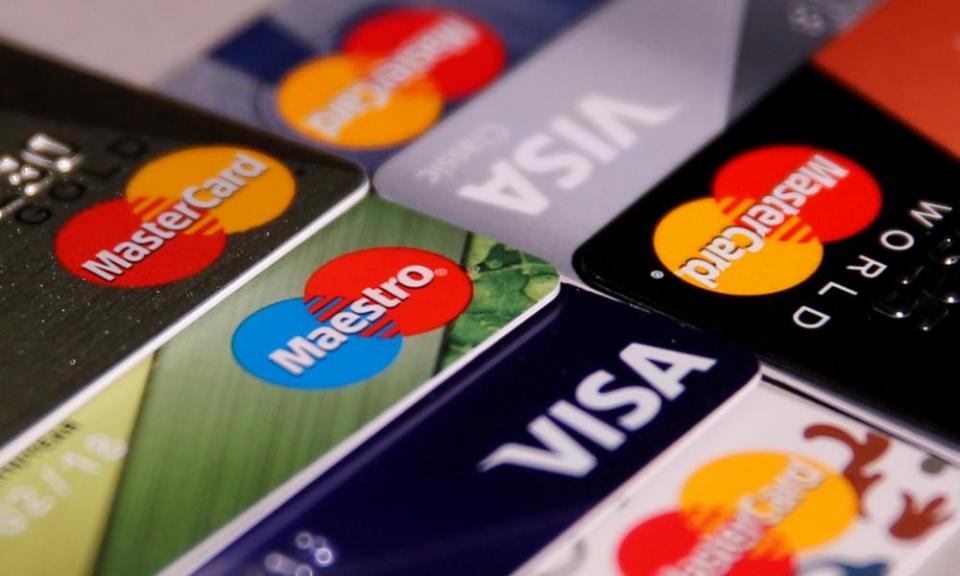UK banks ordered to hold more capital as consumer debt surges

The Bank of England is to force banks to strengthen their financial position in the face of a rapid growth in borrowing on credit cards, car finance and personal loans.
The intervention by Threadneedle Street means banks will need to set aside as much as £11.4bn of extra capital in the next 18 months and is intended to protect the financial system from the 10% rise in consumer lending over the year.
The Bank is also bringing forward the part of the annual stress tests on banks that scrutinises their exposure to consumer credit by two months to September. The Bank’s Prudential Regulation Authority and the City regulator, the Financial Conduct Authority, will also publish next month how they expect lenders to treat borrowers in the consumer credit market.
The Bank’s half-yearly assessment of risk to financial markets also set out measures to rein in the riskiest mortgage lending, highlighted the risks associated with the UK’s exit from the European Union and said commercial property prices were “at the top end of sustainable valuations”.
While the Bank found risks to financial stability were neither “particularly elevated nor subdued” it warned that there “pockets of risk that warrant vigilance”.
“Consumer credit has increased rapidly. Lending conditions in the mortgage market are becoming easier. And lenders may be placing undue weight on the recent performance of loans in benign conditions,” said Mark Carney, governor of the Bank of England.
Carney said the decision to call on banks to hold more capital – which is largely a rejig of their current resources rather than raising new funds – was taken after domestic risks returned to “standard” levels. A year ago, after the Brexit vote, the Bank had relaxed regulatory requirements on banks – using new tools it was given after the financial crisis – and is now reversing that decision.
Carney distinguished between interest rates – cut to a record low of 0.25% after Brexit – and financial policy instruments. “Monetary policy is the last line of defence to address financial stability issues,” he said, with monetary policy focused on keeping inflation at its target rate of 2% rather than controlling lending. He said earlier this month that rates should stay on hold.
Debt charities warned of the consequences for the 8.8 million individuals using credit for essential household bills if the Bank’s measures led to lenders increasing rates.
“Any increase in borrowing costs could tip households, many of which are already on a financial knife-edge, into serious financial hardship,” said Mike O’Connor, the chief executive of StepChange Debt Charity.
Joanna Elson, the chief executive of the Money Advice Trust, said there had been an 8% rise in the number of people using its national debtline this year and that the Bank was right to act.
The fastest- growing component of consumer credit is car finance, which has been rising at 15% a year, while credit card lending is rising at 9% and personal lending at 7%.
The Bank calculates there is £58bn of car dealership finance, including £24bn from banks; £67bn in credit cards, including £52bn from banks; and £72bn in loans and overdrafts, of which £62bn originates from the banking sector.
The UK consumer credit market is valued at about £200bn – a seventh of the size of the £1.4tn mortgage market but with write-offs several times larger than mortgages.
Threadneedle Street is also monitoring mortgage lending, which has risen by a more moderate 2.8% but where there are signs of an increase in riskier lending, measured by the size of the loan to an individual’s income.
Affordability tests are being tweaked so lenders must test that borrowers can afford a three percentage point increase in their standard variable rate (SVR) – a rise to about 7%. This is tighter than the current requirement for a three percentage point rise in the base rate, which allows lenders some discretion by assuming they will not pass on the full rate rise in their SVR.
The Bank also said it would keep in place measures introduced in 2014 that limit high-risk lending to 15% of a lender’s overall lending.
The additional capital requirements come in two phases; an 0.5% rise in a special pot of capital known as a the countercyclical capital buffer in June 2018 and another 0.5% the year after that. Each 0.5% increase amounts to about £5.7bn of extra capital in the system and does not necessarily mean banks would have to raise fresh amounts of cash but rather reallocate existing capital.
Andrew Wishart of Capital Economics said: “The policy change is unlikely to make much difference to overall lending given that the majority of banks are already better capitalised than required.”
On Brexit, the Bank said it was continuing to “identify and monitor UK financial stability risks so that preparations can be made and action taken to mitigate them”. Carney said risks, including those from a hard Brexit, were being assessed, and he warned of the costs of fragmenting Europe’s financial markets.

 Yahoo Finance
Yahoo Finance 